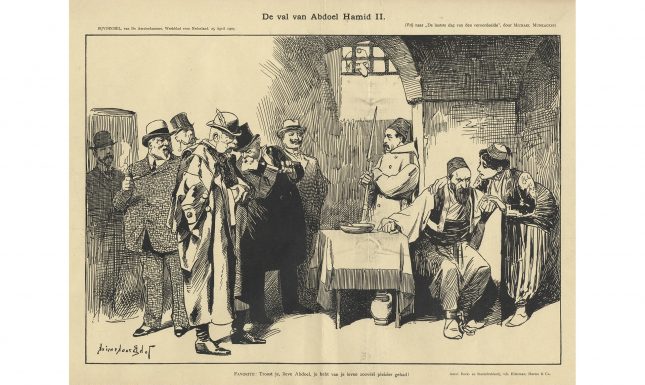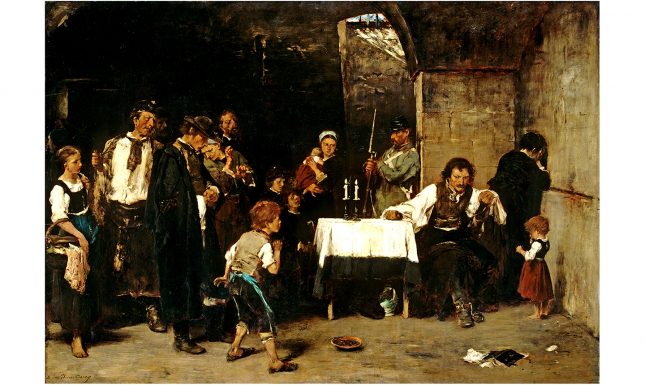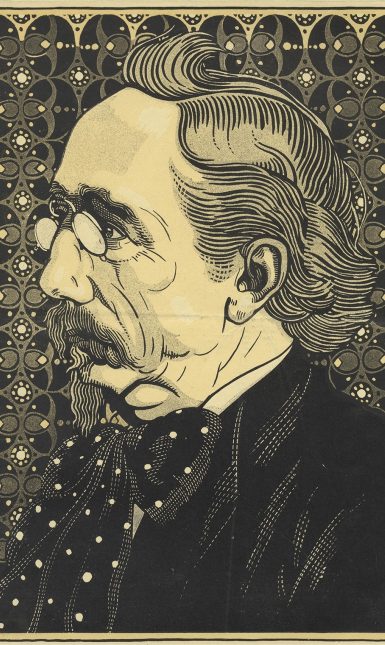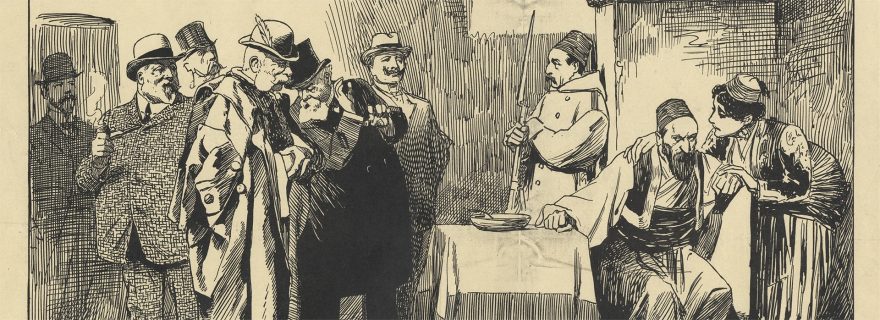Johan Braakensiek’s Cartoon of an Imprisoned Ottoman Sultan (1909)
Turkish prisons tend to house not only criminals but also political opponents. After the Young Turk Revolution, the sultan himself became a political opponent and ended up in prison. Dutch caricaturist Johan Braakensiek noticed the absurd irony of the situation.
The Turkish Republic has a long-standing reputation for the mass incarceration of political opponents and criminals alike, especially since the 2016 abortive coup against President Recep Tayyip Erdoğan. With its nearly 11,000 inmates the Silivri correctional facility near Istanbul may very well be the largest prison in Europe. During the Covid-19 crisis of 2020 many criminals were released, but not the political prisoners.
More than a century earlier, in April 1909, a different Turkish prison hosted a very special guest: Sultan Abdul Hamid II (1842-1918), the last Ottoman monarch to wield effective power in his realm. After the deposition of his brother Murad V, his rule had begun auspiciously enough with the promulgation of a Constitution in 1876. Two years later, however, it was revoked, leaving Abdul Hamid the absolute and morbidly suspicious ruler of a slowly disintegrating empire. After his ascent to absolute power, he initiated wide-ranging economic and military reforms, leaving the already economically weak country crippled with debt.
In 1908 his power was severely curtailed by the Young Turk revolution, which led to the reintroduction of the Constitution. After a failed counter-coup the sultan was formally deposed in April 1909 and transferred to a prison in Thessaloniki (then still part of the Ottoman Empire). After 1912 he spent his last years under house arrest in the Istanbul palace of Beylerbeyi, in the company of his many wives and children.
The Last Day of a Condemned Man
This Dutch cartoon of 25 April 1909 shows a morose ex-sultan with shackled feet in a dungeon.


On his left is a group of European visitors, among whom we recognise prominent figures such as King Edward VII, Kaiser Franz Joseph of Austria-Hungary and Kaiser Wilhelm II of Germany. Together they symbolise the political machinations of the Powers to take over control of the Ottoman Empire. A young girl, possibly a favourite concubine, tries to comfort the sultan, but in vain.
The cartoon is a pun on a popular and well-known oil painting, The Last Day of a Condemned Man by the Hungarian society painter Mihály Munkácsy (1844-1900).


It was drawn by the Dutch caricaturist Johan Braakensiek (1858-1940), a socially engaged artist who often published in the left-wing weekly De Amsterdammer, a periodical which still exists under the title De Groene Amsterdammer. Then as now, the magazine is deeply concerned about the erosion of civil liberties in Turkey.


This blogpost by curator Arnoud Vrolijk is part of the Leiden University Libraries' (UBL) thematic programme ‘Oppression and Freedom’ in which the UBL explores views on identity, relations and the interaction between individuals and groups in the past. The programme includes several (online) exhibitions, workshops and lectures on the subject of oppression and freedom.


